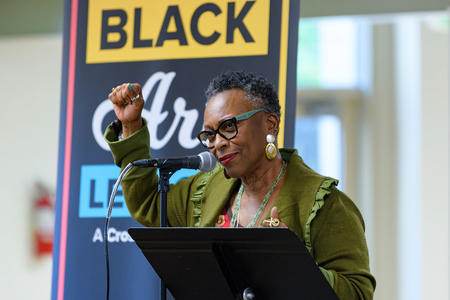One of the great things about local government is that eventually pragmatism wins out in almost every instance. We have a great example of this regarding the mayor and city council’s decision to lower parking rates at Pacific Place garage to try and get more people to use it and spend money downtown. I applaud them for looking at the situation as any business owner would — not enough people are buying my product, so lower the price and make it more accessible.
This decision will make the garage an easier choice for people going to see a movie, shopping, having dinner, or hanging out. Although there are many reasons for the struggling business climate, having city government make direct changes to help attract people downtown is welcome.
I would hope that same pragmatic approach can be harnessed to help out struggling Pioneer Square. Street parking in the Square will now be more than the Pacific Place garage and Belltown. While the city hasn’t moved yet on the planned extension of the parking hours from 6 to 8 p.m. in the Square, merchants worry about it still.
The city has gone to great pains to quote studies and show that parking rates are not imposed on a whim. In fact, Mayor Mike McGinn'ss press release on Pacific Place used the word “pragmatic” twice and mentioned that 11 neighborhoods saw their parking meter rates reduced.
The mayor states in his release: “We’re experimenting with lower parking rates at Pacific Place Parking Garage to see if we can bring in more business.” We should all hope that this is a successful strategy and should give the mayor credit for trying to create a welcoming environment for visitors coming downtown by all modes of travel.
Now, let’s see that same energy and pragmatic attitude turned to help Pioneer Square.
Lede: This week Wal Mart is the subject on Green Acre Radio. The largest retailer in the work, reviled by many for its take-no-prisoners approach to market domination, has become an improbable trailblazer in the burgeoning field of green business. Green Acre Radio interviews Pulitzer Prize-winning author Edward Humes about his just released book, Force of Nature, The Unlikely Story of Wal Mart’s Green Revolution How It Could Transform Business and Save The World.
Narration: With Green Acre Radio this is Martha Baskin. What happens when a renowned river guide teams up with the CEO of one the world’s largest and least Earth-friendly corporations? When it’s former Wal-Mart CEO Lee Scott and white-water turned sustainability consultant Jib Ellison, the result is an unlikely revolution. In his new book, Force of Nature The Unlikely Story of Wal Mart’s Green Revolution How It Could Transform Business and Save The World, Pulitzer Prize-winning author Edward Humes tells the story of Wal Mart’s massive makeover. It all began in 2005. An internal report showed the company was losing 8% of its customers because of its reputation for putting local stores out of business, outsourcing, low wages and even lower wages for women. The company was fishing for good PR. Author Edward Humes, “FORTUNATELY FOR EVERYONE, PARTICULARLY WAL MART AND THE ENVIRONMENT, THE LEADER OF WAL MART AT THE TIME, LEE SCOTT, MET THE RIVER GUIDE, JIB ELLISON, WHO HAD THIS MESSAGE THAT IT REALLY WASN’T ABOUT PR THAT SUSTAINABILITY WAS THE BIGGEST UNTAPPED OPPORTUNITY FOR BUSINESSES OF THE 21ST CENTURY.”
Guided by Jib Ellison’s company Blu Skye, Wal Mart became a laboratory to test the business case for sustainability. Ellison’s first recommendation was to reduce packaging in a Wal Mart brand toy truck, “Kids Connection”. “THEY SELL THEM BY THE MILLIONS, THEY’RE MADE IN CHINA, THEY’RE FOR TODDLERS AND THEY SHAVED A FEW INCHES OFF THE PACKAGE. SUCH A MINOR CHANGE THAT CUSTOMERS WOULDN’T EVEN NOTICE THE DIFFERENCE.” But the difference was huge. “THE FIRST THING THAT HAPPENED IS 4000 TREES DIDN’T CUT DOWN TO MAKE THE PACKAGING FOR THESE TOYS.” As for Wal Mart’s bottom line, 497 fewer cargo containers needed to be shipped from China saving the company a million gallons in fuel. “TWO AND A HALF MILLION DOLLARS STAYS IN WAL MART’S POCKET. SO WHEN THEY CRUNCH THE NUMBERS THEY SAY, HEY, WHY DIDN’T WE SEE THIS BEFORE?”
The quest for more sustainability measures was on -- everything from reduced packaging to zero waste and more efficient trucks in their fleet of 7,000. Sustainabiity was good for profits. It became a competition within the company, says Humes, to find the next Kids Connection toy. Laundry detergent was next. “THEY TOLD THE DETERGENT INDUSTRY, ENOUGH WITH THE JUMBO BOTTLES ALL THEY HAVE IN THEM COMPARED TO THE CONCENTRATED SMALLER BOTTLES IS MORE WATER AND MORE PLASTIC.” Wal Mart set out to educate consumers. “AND THEY DID. THEY SINGLE HANDEDLY DROVE THE INDUSTRY TO MORE SUSTAINABLE PACKAGING OF DETERGENT, DOWN TO THE KETCHUP SIZE BOTTLES.” It will take a few years to catch on but when Wal Mart demands a smaller bottle for detergent, says Humes, Proctor and Gamble will eventually only make small bottles. “400 MILLION GALLONS OF WATER CONSERVED. 95 MILLION TONS OF PLASTIC NOT USED AND CREATED FROM FOSSIL FUELS. INCALCUABLE SAVINGS IN CARBON EMISSIONS BECAUSE OF ALL THE SMALLER BOTTLES THAT CAN BE FIT INTO A TRACTOR TRAILER LOAD”.
Humes is the first to admit that a big box retailer like Wal Mart, can never be truly sustainable, but he was drawn to share their story of deciding to conduct business in a greener fashion. As the largest retailer in the world, Wal Mart decisions rock the global supply chain. “FOR THE APPAREL INDUSTRY, FOR THE DAIRY INDUSTRY, FOR THE ELECTRONICS. SUSTAINABILITY AS A BUSINESS STRATEGY HAS THE POTENTIAL FOR BEING REVOLUTIONARY IN A WAY WE HAVEN’T SEEN ON THE ENVIRONMENTAL FRONT IN A VERY LONG TIME.” One of the company’s more impressive goals, says Humes, is to remove twenty million metric tons of greenhouse gas emissions from its supply chain. A decision that will help them reach this goal, is switching from conventional cotton in children’s clothing to organic. Jib Ellison, the river guide who became Wal Mart’s sustainability guide, took the company’s lead apparel buyer to two growing operations in Turkey. One was organic. The other conventional. “THE ORGANIC COTTON PLACE WAS A PLEASURE. IT WAS BEAUTIFUL IT WAS LIKE A STROLL THROUGH THE PARK AND THE CONVENTIONAL COTTON OPERATION WAS ALMOST UNBEARABLE IT WAS SO STEEPED IN TOXICS, PESTICIDE AND HERBICIDE THAT YOU COULD NOT WALK BY IT WITHOUT THE TEARS STREAMING OUT OF YOUR EYES.” Wal Mart’s apparel buyer, says Humes, vowed to change the company’s product line. Since then Wal Mart has become the biggest purveyor of organic cotton products on the planet. While many customers are cash strapped, the company has had success in marketing organic if it only costs a little extra. The book, Force of Nature, The Unlikely Story of Wal Mart’s Green Revolution, won’t convince all Wal Mart’s critics that it’s now a force for good. But it convincingly shows that Wal Mart’s green revolution is reaching a demographic that the environmental movement has been unable to reach after decades of effort. In a consumer culture with 200 million weekly customers, that’s no mean feat.
Engineering by CJ Lazenby. Green Acre Radio thanks KBCS for this broadcast time. The station depends on listeners just like you. Pledge drive is on the way, please make your contribution today. From the studios of Jack Straw Productions and KBCS this is Martha Baskin.


